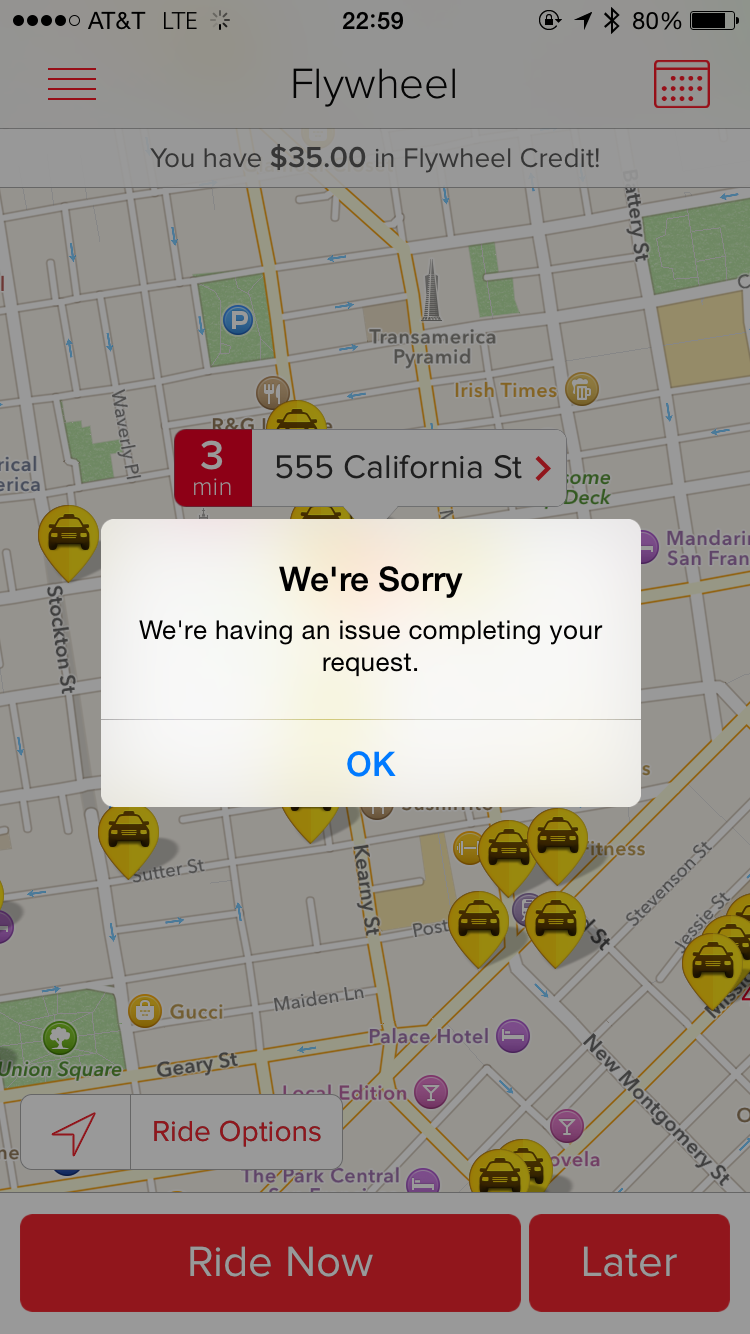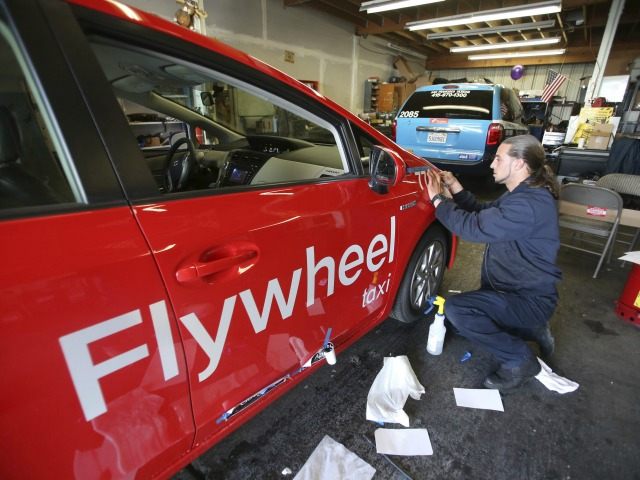Uber is systematically wiping out taxis in San Francisco. As of last year, average taxi trips per month had reportedly plummeted 65 percent in just 2 years. In an effort to save the industry, a new startup, FlyWheel, has begun outfitting taxis with the Uber-like convenience of smartphone hailing and payments.

Still, Uber has received 150 times the investment ($5.9B vs. $35M), and after testing the competitor’s latest innovation, it’s clear that Uber’s unionized counterpart is having trouble keeping up.
I was quite excited to test out FlyWheel’s latest feature launched on Thursday, an app that automatically detects if I’m in a taxi and allows me to pay through my phone. I didn’t even know that it was technically possible for my phone to recognize when I was near a particular car. This seemed like an impressive innovation. Indeed, the feature was hailed Thursday in the news as proof that taxis could still compete with Silicon Valley.
Unfortunately, the execution was rather frustrating. And, during my trip, not only did the app fail, but so did other parts of the experience that have long since been solved by other ridesharing startups.
- I went outside to grab a cab. But, waiting for an open cab in San Francisco during the busy post-dinner rush hour near Russian Hill took about 5 times longer than e-hailing an Uber from the comfort of the restaurant.
- When I eventually snagged a FlyWheel-enabled cab, the feature didn’t work, and I had to then exit the car and pay $4 for a mere 5 second trip.
- Eventually, I trekked up to a series of hotels where I knew I could find a FlyWheel-branded cab. Success! The prompt switched on as soon as I walked up to the FlyWheel cab.

- Midway through, the app stopped working and gave me a notice that there was a fatal error.
- The driver called in the problem to a rather disinterested dispatcher, who informed the driver in no uncertain terms that this was not something he could fix.
- So, I tried to exit the cab and start over, but when we pulled to the side of the road, FlyWheel couldn’t find an address, and I spent 5 minutes trying to name locations near the area with a known landmark.

- After we found an address and eventually made it to the location, I had to negotiate with the driver how to apply the tip from the first part the ride. It took us some time before we figured out that he should charge me a certain amount and I shouldn’t give a tip.
This experience was less-than-friendly, and it’s fundamental to unionized industries.
I suspect this isn’t a FlyWheel problem; they’re working with what they have. Unionized industries, generally, are far less innovative. Economists find that businesses that choose to unionize generally see a drop in productivity and innovation.
In this case, FlyWheel’s latest feature is solving a problem created by government-mandated scarcity. There’s only so many licensed cabs allowed on the road. As a result, it is sometimes quicker to hop in a cab that happens to drive by, rather than wait a few minutes for a smartphone-hailed cab to show up (hence, the reason for the new feature).
But, it can take a long time for e-hailed cabs to arrive precisely because the taxi licensing system restricts the number of cabs on the road. Uber is adding drivers at a crazy pace and wait times have shrunk to a few minutes or less.
FlyWheel’s latest feature is an artifact of a legal system that Uber could soon dismantle. FlyWheel is making taxis better than their former selves, but not better than the competition.
*The Ferenstein Wire is a syndicated news service. For inquires, email Greg at greg ferenstein dot com.

COMMENTS
Please let us know if you're having issues with commenting.